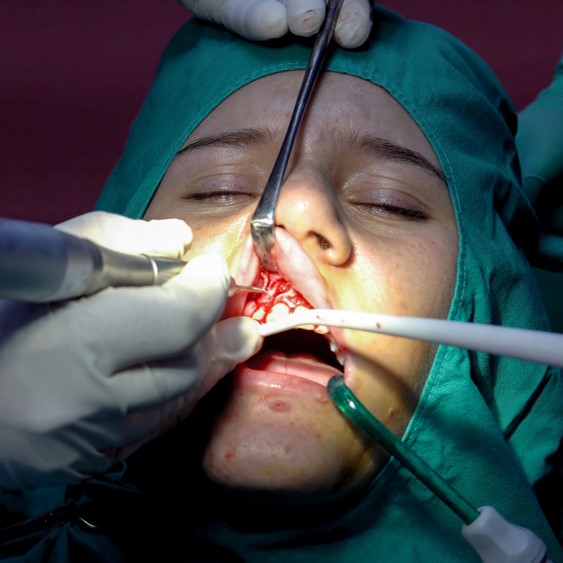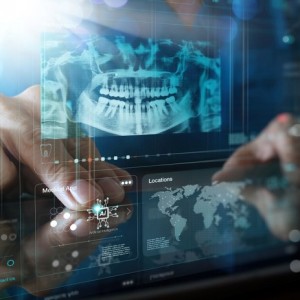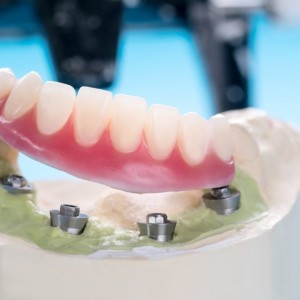
Emerging Perspectives in Scaffold for Tissue Engineering in Oral Surgery
Bone regeneration is currently one of the most important and challenging tissue engineering approaches in regenerative medicine. Bone regeneration is a promising approach in dentistry and is considered an ideal clinical strategy in treating diseases, injuries, and defects of the maxillofacial region.
Advances in tissue engineering have resulted in the development of innovative scaffold designs, complemented by the progress made in cell-based therapies. In vitro bone regeneration can be achieved by the combination of stem cells, scaffolds, and bioactive factors. The biomimetic approach to create an ideal bone substitute provides strategies for developing combined scaffolds composed of adult stem cells with mesenchymal phenotype and different organic biomaterials (such as collagen and hyaluronic acid derivatives) or inorganic biomaterials such as manufactured polymers (polyglycolic acid (PGA), polylactic acid (PLA), and polycaprolactone). This review focuses on different biomaterials currently used in dentistry as scaffolds for bone regeneration in treating bone defects or in surgical techniques, such as sinus lift, horizontal and vertical bone grafts, or socket preservation.
Our review would be of particular interest to medical and surgical researchers at the interface of cell biology, materials science, and tissue engineering, as well as industry-related manufacturers and researchers in healthcare, prosthetics, and 3D printing, too.
Introduction
Bone tissue engineering aims to restore tissues damaged due to trauma, diseases, or congenital abnormalities. This tissue engineering approach can be developed by combining stem cells with innovative scaffolds designed to produce the required extracellular matrix in an adequate manner and ultimately a healthy bone tissue with acceptable geometry, size, and composition. Thus, regenerative medicine can be successfully combined with tissue engineering to recreate the appropriate cellular microenvironment that can rebuild whole organs .
In the last 20 years, there has been increasing interest in tissue regeneration in the craniofacial region as well as for whole teeth and periodontal structures in dentistry. The principles of tissue engineering have found widespread application in several branches of dentistry, such as periodontics, oral maxillofacial surgery, and implant dentistry. Tooth engineering attempts to enhance the creation of osseointegrated implants with specific, biocompatible materials that replace the missing tooth or provide support to the regenerated maxillary bone. In implant dentistry, the lack of adequate bone tissue and proximity to important anatomical structures (such as the maxillary sinus and the inferior alveolar nerve) are the most frequently observed problems at the implantation site.
To avoid iatrogenic damage to sensitive structures, the sinus lift, horizontal and vertical bone grafts, and socket preservation are the conventionally used surgical techniques. These techniques have been considerably improved in the last 5 years to achieve the regeneration of increasingly larger and higher bone volume and will ensure the best prosthetic rehabilitation for each patient. For successful outcomes in regenerative dentistry, the combination of stem cells of mesenchymal origin and scaffolds has been regarded to have considerable potential in regenerative medicine at the maxillary bone level.
For these reasons, bone tissue engineering represents an important and promising approach to treat various pathological conditions in the oral cavity. Bone tissue engineering for pathological bone conditions requires an appropriate source of mesenchymal stem cells, such as dental pulp stem cells (DPSCs) or periosteal stem cells (PSCs), and a suitable scaffold on which the stem cells can be seeded and growth factors/molecular signals can be provided in order to facilitate bone regeneration . Several studies have reported different scaffolds for different types of tissue regeneration; for example, some scaffolds used in plastic surgery attract the epidermal and connective substitutes, while others are specifically used for bone regeneration.
This review will focus on the significant advancements that have been made in the field of dentistry-based tissue engineering with emphasis on the different biomaterials currently available in clinical therapy for surgical procedures in the oral cavity. Moreover, it would be of particular interest to medical and surgical researchers at the interface of cell biology, materials science, and tissue engineering, as well as industry-related manufacturers and researchers in healthcare, prosthetics, and 3D printing, too.
Authors: Gabriele Ceccarelli, Rossella Presta, Laura Benedetti, Maria Gabriella Cusella De Angelis, Saturnino Marco Lupi, Ruggero Rodriguez y Baena
Source: https://onlinelibrary.wiley.com/
 Related articles
Related articles
Digital Dentistry 22 October 2025
Artificial intelligence in dentistry: Exploring emerging applications and future prospects
This narrative review aimed to explore the evolution and advancements of artificial intelligence technologies, highlighting their transformative impact on healthcare, education, and specific aspects...
The global dental equipment market is expected to grow from USD 6.9 Billion in 2024 to USD 9.3 Billion by 2029, at a CAGR of 6.2%.
The Blind Spot 22 February 2022
Fluoride: Access, emerging educational challenges pose risks to cavity prevention
Over the last 70 years, it has been well documented that access to fluoride for the U.S. population has contributed to dramatic declines in the prevalence and severity of tooth decay. This e-book was...
Monthly poll now being called Economic Outlook and Emerging Issues in Dentistry
The ADA Health Policy Institute’s monthly COVID-19 financial results poll is evolving for 2022, and the institute is recruiting dentists to join the new survey panel.In addition to asking some of...
Endodontics 15 April 2025
Digital and technological developments may help improve the management and treatment of endodontic cases.
 Read more
Read more
Prosthodontics 17 November 2025
The purpose of this report is to describe a new technique to fabricate and deliver an implant-supported fixed prosthesis to the patient on the day of surgery, and to propose a protocol for the...
Editorials 17 November 2025
The Langkamp Allison Award recognizes a Pitt Dental Medicine third-year dental student interested in pursuing a career in dental education.
Products 17 November 2025
VELMENI today unveiled VELMENI Voice, an AI-driven voice recognition tool designed to transform periodontal charting and clinical documentation.
News 17 November 2025
Angelalign Technology Inc. (6699.HK) (“Angel”) recently announced the expansion of its flexible iOrtho platform to include direct integration with the Dexis, Shining 3D, and Panda scanners.
News 17 November 2025
Following the first FDA clearance for technology that measures internal mobility in teeth, Perimetrics CEO and Chairman Robert Hayman is once again leading dentistry into a new era with InnerView, a...














